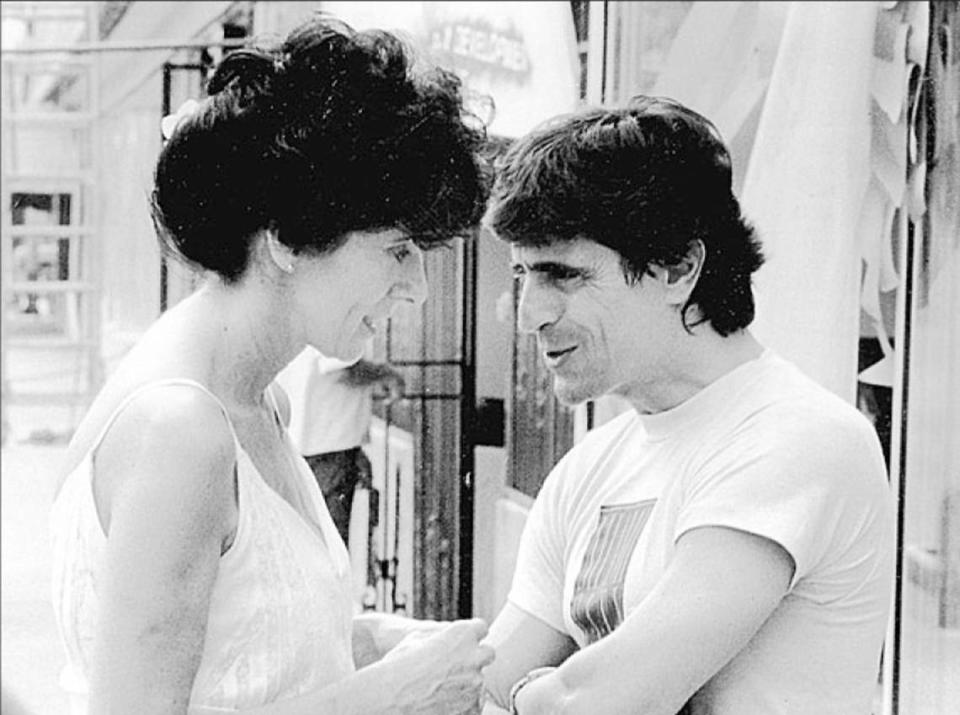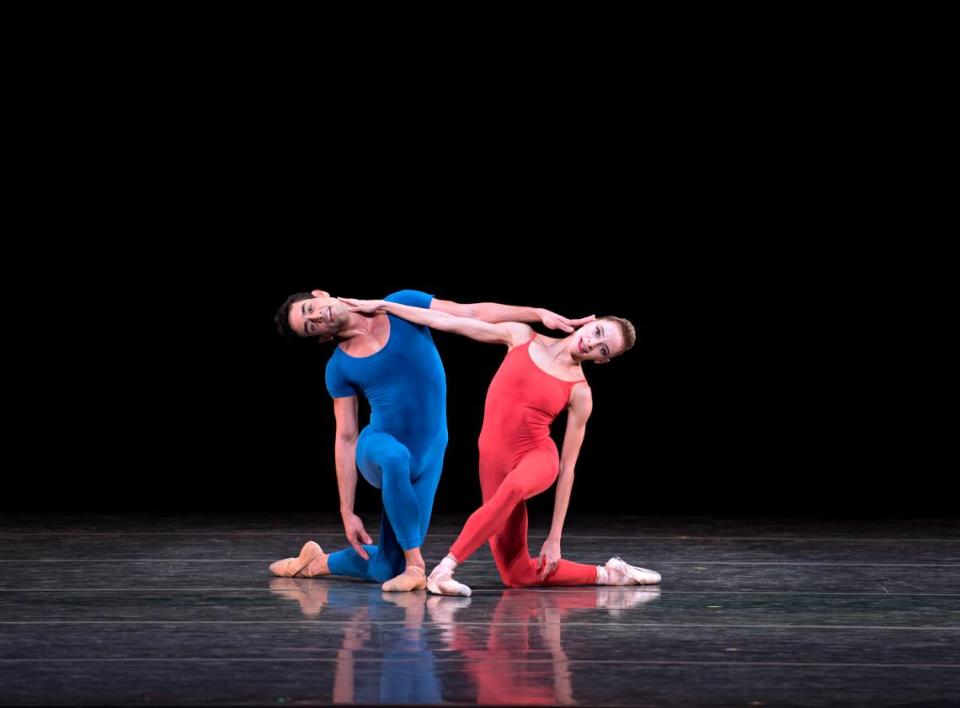Miami City Ballet canceled its live anniversary season. But the dancing continues
With its 2020-2021 regular season canceled due to C19, Miami City Ballet’s 35th anniversary could not come at a less celebratory time.
But where some might see an uncertain future, Miami City Ballet founder, Toby Lerner Ansin, points out the company has consistently overcome challenges from its inception in the early 80s.
“We put together Dance Umbrella – an association of 20 local dance companies directed by David Eden – to raise the awareness of dance in the city,” explained Ansin by phone. “One of the performances was held in the old Pan-American hangar. Former Miami Herald dance critic Laurie Horn, Cuban businessman Octavio Verdeja and I were talking, and I realized we would never have a professional ballet company without a star.”
That set the stage for a meeting between Ansin and former New York City Ballet star, Edward Villela. “On May 14, 1985, he laid out a 10-year plan for the company. I was a mother of three and recently divorced. I called up six of my friends, asked each for $1,000 and put up $1,000 of my own, and with that seed money we started bringing in Villela in for visits to make connections with leaders in the dance, business and philanthropic communities.”

By December 1987, the fledgling company was on its way to Tel Aviv for its first tour, but not without hiccups. “En route the company’s new lighting equipment was stolen. We put out a request for help but it was Shabbat,” continued Ansin, “and so we didn’t hear anything right away. Then, the next day, right at sunset, all the trucks came in with all the electrical equipment we needed. The Israeli paper called us the Miami Miracle – and the name stuck.”
Along the way, the ballet has become known as one of the nation’s top companies, performing to rave reviews at Washington’s Kennedy Center, Theatre du Chatelet in Paris and New York’s Lincoln Center. Though best known for its rich repertoire of ballets by George Balanchine, MCB’s contemporary commissions include innovative collaborations with choreographers Justin Peck, Liam Scarlett and Alexei Ratmansky; artists Shepard Fairey and Michele Oka Doner; and fashion designers Isabel and Ruben Toledo. The 35th season was to include the premiere of Ratmansky’s “Swan Lake.”
The anniversary season coincides with Ansin’s 80th birthday. Despite its cancellation, she exudes optimism about the company’s prospects. “I actually believe that it will result in an incredible amount of creativity and thinking out of the box. For example, think of the possibilities in having virtual ballet. Now people all over the world will get a chance to see us.”
For MCB artistic director Lourdes Lopez, who took over from Villella in 2012, the pandemic has revealed the depth of the city’s support for the company. “When COVID hit and we had to cancel, people didn’t ask for refunds. Donors came forward along with the city and county governments and asked what we needed. The response we’ve received from the community has truly been Miami’s love letter to Miami City Ballet.”
Lopez acknowledged the pandemic forced an organizational reset. “Everyone around us has been forced to think differently. But then if I truly believe what I have said about this artform – that it’s transformational – does it really matter where you do it?,” she added.
Part of that transformation involved the company’s pivot to online performance, thanks in part to a grant from the Knight Foundation to support the creation of new work by choreographers Claudia Shreier and Amy Hall Garner. To work safely, the dancers have created social pods. “Within those pods, they know the other person is healthy and they trust them. There are a couple of dancers in these pods, and we know they can dance together safely,” explained Lopez.
MCB’s online presence enticed its newest dancer, incoming Russian-Canadian principal Elena Lobsanova, to join the company. “I’m definitely open to doing some online pieces and have seen how they [MCB] have experimented with video editing in making new dances and establishing works online. I thought the dancing was so beautiful for ‘A Dance for Heroes,’ ” said Lobsanova, referring to MCB’s virtual work released in May.

Still, the live season’s cancellation came as a shock. MCB principal, Kleber Rebello explained: “In March we thought we might still do ‘Don Quixote’ in May. Then that didn’t happen. Then we had the idea that we would still do outdoor performances, so I kept myself in professional shape. Then last month we heard we were not going to do anything.”
Principal Renan Cedeiro was always skeptical about the fall season: “I always kept in the back of my mind that this virus wasn’t something quick. I knew it was a possibility that we would not get back in the studios.”
Ballerina Natalia Arja had just been promoted to principal when the closure was announced: “I finally got promoted – achieved my life’s dream — then I was locked at home. I wanted to be dancing. I felt, ‘I have finally got where I wanted to be with the company and now this moment is wasted.’ ”
Despite their disappointment, the dancers were quick to see bright spots.
Rebello valued the new lines of communication between administration, staff and dancers. “The administration really opened up to us for negotiations, talks and meetings,” he said. “Other dancers in other companies haven’t even heard yet what they will be doing this season, but we already know.”
Arja was overwhelmed by the community’s support for the company. “What has amazed me is to see the loyalty of the donors – the major, generous donations of the donors. We are over here as dancers trying to stay in shape in our homes, and they’re over there keeping us employed and with health insurance.”
“We’ve had some rough times before where we were not sure about the next season, and we’re not in that place,” added Cerdeiro pragmatically.
The extra time has even allowed some, like corps dancer Christina Spigner, to assume new roles, such as Dancer Representative, a position in ballet companies that traditionally liaisons between dancers and administration.

“Social advocate would be a new space that I’m trying to create in the company,” said Spigner. “When I received the nomination for Dancer Representative I shared that I wanted to be a diversity liaison for issues connected to race, gender and sexual orientation, and the other dancers supported my vision for this new role.”
In the new role, Spigner, who is African-American, co-wrote the company’s first Juneteenth post celebrating the African American day of Independence with MCB instructor Herman Payne and manager Joy Stanfield.
Going forward, Miami City Beach Mayor, Dan Gelber, sees the company playing an important role in democratizing the city’s art. “When I was a much younger man, they used to have open rehearsals on Lincoln Road, and people would go there and it was a wonderful date. We want the ballet to be more integrated in the community.” Until a mid September, passersby on Lincoln Road often could see dancers rehearing in temporary Miami City Ballet practice studios in retail space donated by The Comras Company.
MCB currently participates in the city’s S.T.E.A.M.+ program, an out-of-the-box approach to arts education the Gelber administration implemented in 2019 to connect the city’s arts institutions with area schools.

“The dancers take the kids through a creative process,” explained the Mayor’s Chief of Staff, Michele Berger. “For instance, they ask them to imagine they are an animal in the sea. The movements of the children take on a different life on the basis of imagining those animals. And then they study the animal’s actual movements, connecting dance with science.”
Other city projects include the construction of an arts campus adjacent to Collins park for ballet dormitories, arts workforce housing, galleries and cafes.
“Any time I’ve ever been anywhere in the world I’ve noticed that what’s especially memorable are these kinds of interactions with theater, ballet, or a visual arts display,” said the mayor. “If you can choose the moments to create, that’s the kind I want.”


